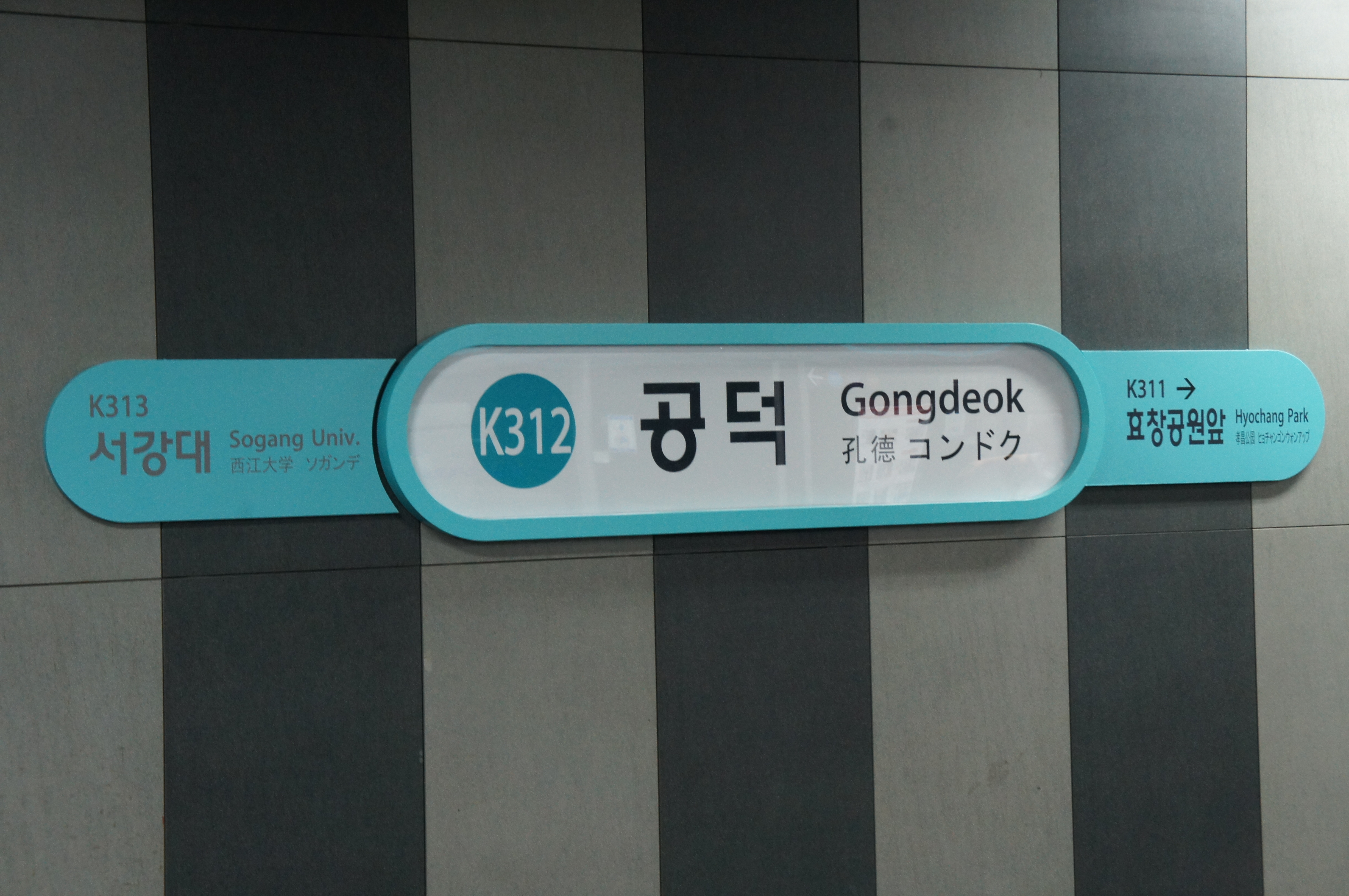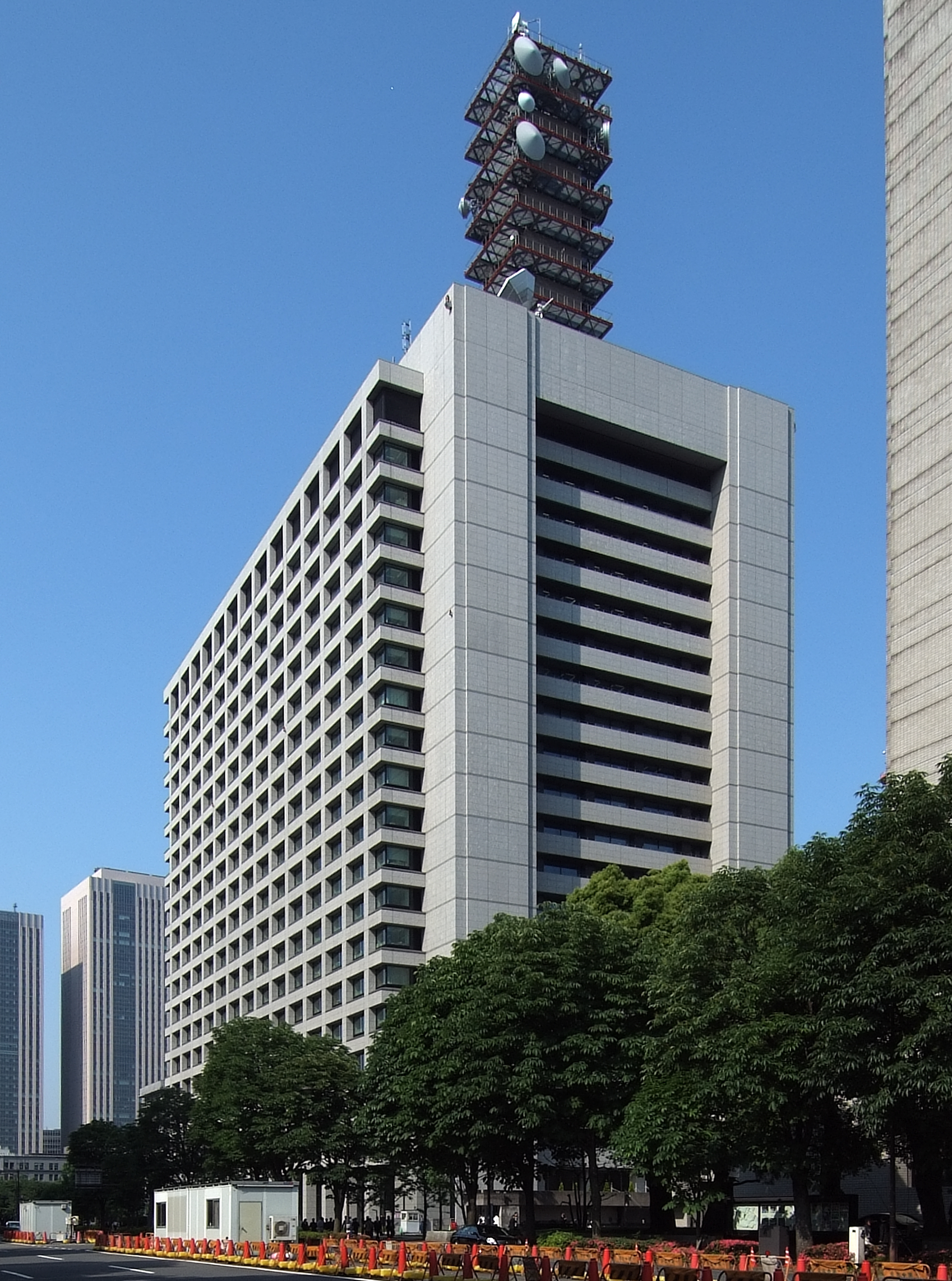|
Kamakurakōkōmae Station
is a commuter railway station on the Enoshima Electric Railway (Enoden), located in the Koshigoe neighborhood of the city of Kamakura, Kanagawa Prefecture, Japan. Though small in size, it is known for its scenery, as it commands an open view of the Pacific Ocean and Mount Fuji from the station platform. Lines Kamakurakōkōmae Station is served by the Enoshima Electric Railway Main Line and is from the terminus of the line at Fujisawa Station. Station layout The station consists of a single side platform serving bi-directional traffic. The station is unattended. Platforms History Kamakurakōkōmae Station was opened on 20 June 1903 as . It was renamed to its present name on 20 August 1953. In 1997, it was selected as one of the by a selection committee commissioned by the Japanese Ministry of Transportation. Station numbering was introduced to the Enoshima Electric Railway January 2014 with Kamakurakōkōmae being assigned station number EN08. Cultural impact The su ... [...More Info...] [...Related Items...] OR: [Wikipedia] [Google] [Baidu] |
Mount Fuji
is an active stratovolcano located on the Japanese island of Honshu, with a summit elevation of . It is the highest mountain in Japan, the second-highest volcano on any Asian island (after Mount Kerinci on the Indonesian island of Sumatra), and List of islands by highest point, seventh-highest peak of an island on Earth. Mount Fuji Hōei eruption, last erupted from 1707 to 1708. It is located about southwest of Tokyo, from where it is visible on clear days. Its exceptionally symmetrical cone, which is snow field, covered in snow for about five months of the year, is a Japanese cultural icon and is frequently depicted in art and photography, as well as visited by sightseers, hikers and mountain climbers. Mount Fuji is one of Japan's along with Mount Tate and Mount Haku. It is a List of Special Places of Scenic Beauty, Special Historic Sites and Special Natural Monuments, Special Place of Scenic Beauty and one of Japan's Monuments of Japan, Historic Sites. It was added to th ... [...More Info...] [...Related Items...] OR: [Wikipedia] [Google] [Baidu] |
Railway Stations In Kanagawa Prefecture
Rail transport (also known as train transport) is a means of transport using wheeled vehicles running in railway track, tracks, which usually consist of two parallel steel railway track, rails. Rail transport is one of the two primary means of land transport, next to road transport. It is used for about 8% of passenger and rail freight transport, freight transport globally, thanks to its Energy efficiency in transport, energy efficiency and potentially high-speed rail, high speed.Rolling stock on rails generally encounters lower friction, frictional resistance than rubber-tyred road vehicles, allowing rail cars to be coupled into longer trains. Power is usually provided by Diesel locomotive, diesel or Electric locomotive, electric locomotives. While railway transport is capital intensity, capital-intensive and less flexible than road transport, it can carry heavy loads of passengers and cargo with greater energy efficiency and safety. Precursors of railways driven by human or an ... [...More Info...] [...Related Items...] OR: [Wikipedia] [Google] [Baidu] |
Sagami Bay
lies south of Kanagawa Prefecture in Honshu, central Japan, contained within the scope of the Miura Peninsula, in Kanagawa, to the east, the Izu Peninsula, in Shizuoka Prefecture, to the west, and the Shōnan coastline to the north, while the island of Izu Ōshima marks the southern extent of the bay. It lies approximately southwest of the capital, Tokyo. Cities on the bay include Odawara, Chigasaki, Fujisawa, Kanagawa, Fujisawa, Hiratsuka, Itō, Shizuoka, Itō, and Kamakura, Kanagawa, Kamakura. History The center of the 1923 Great Kantō earthquake, Great Kantō earthquake in 1923 was deep beneath Izu Ōshima Island in Sagami Bay. It devastated Tokyo, the port city of Yokohama, and the surrounding prefectures of Chiba Prefecture, Chiba, Kanagawa, and Shizuoka Prefecture, Shizuoka, and caused widespread damage throughout the Kantō region. The shallow nature of the seabed on the north of the bay, and the funnelling effect of tsunami and typhoon wave energy, contributed to cer ... [...More Info...] [...Related Items...] OR: [Wikipedia] [Google] [Baidu] |
Japan National Route 134
is a national highway connecting the city of Yokosuka and the town of Ōiso in Kanagawa Prefecture, Japan Japan is an island country in East Asia. Located in the Pacific Ocean off the northeast coast of the Asia, Asian mainland, it is bordered on the west by the Sea of Japan and extends from the Sea of Okhotsk in the north to the East China Sea .... References 134 Roads in Kanagawa Prefecture 1953 establishments in Japan {{Japan-road-stub ... [...More Info...] [...Related Items...] OR: [Wikipedia] [Google] [Baidu] |
Apple Daily (Taiwan)
''Apple Daily'' ( zh, t=蘋果日報, p=Píngguǒ Rìbào, poj=Pîn-kó Ji̍t-pò) was a Chinese-language tabloid published in Taiwan, known for its sensational headlines, paparazzi photographs, and animated news videos. The paper was owned by Next Digital (fka Next Media), which published an eponymous newspaper in Hong Kong. ''Apple Daily'' (Taiwan) published its last printed edition on 17 May 2021, and operated its website until 31 August 2022, before rebranding itself as Next Apple News. History After Jimmy Lai found Next Media Taiwan in late 2000 and started a Taiwanese version of '' Next Magazine'', preparations began for the launch of a Taiwanese version of ''Apple Daily'' in 2003, with senior journalists from '' China Times'' and '' United Daily News'' being taken on. Both these newspapers and the '' Liberty Times'', the "big three" in Taiwanese journalism, initially blocked ''Apple Daily'' first published on 2 May 2003. It was the first newspaper in Taiwan to publi ... [...More Info...] [...Related Items...] OR: [Wikipedia] [Google] [Baidu] |
Tari Tari
''Tari Tari'' is a 2012 Japanese anime television series produced by P.A. Works, written and directed by Masakazu Hashimoto. The series aired in Japan between July 1 and September 23, 2012, on TV Kanagawa, and was also simulcast by Crunchyroll. The series is licensed in North America by Sentai Filmworks. A manga adaptation illustrated by Tomiyaki Kagisora was serialized in Square Enix's '' Gangan Joker'' in 2012. Plot The story centers around five Japanese high school students who are too young to be called adults, but who no longer think of themselves as children. Wakana Sakai once took music lessons, but she withdrew from music after losing her mother. Konatsu Miyamoto is a positive-thinking girl who loves singing and spends time after school at the vocal music club. Sawa Okita is a spirited archery club member who dreams of becoming a horse rider. Taichi Tanaka is a chronically late badminton team member who lives with his college student sister. "Wien" just transferred in ... [...More Info...] [...Related Items...] OR: [Wikipedia] [Google] [Baidu] |
Slam Dunk (manga)
''Slam Dunk'' (stylized in all caps) is a Japanese sports manga, sports manga series written and illustrated by Takehiko Inoue. It was serialized in Shueisha's shōnen manga, manga magazine ''Weekly Shōnen Jump'' from October 1990 to June 1996, with the chapters collected into 31 volumes. The story follows Hanamichi Sakuragi, a brash and impulsive high school student who joins a basketball team at Shohoku High School, located in the Shōnan area of Japan. The manga was adapted into an anime television series by Toei Animation which aired from October 1993 to March 1996. The series has been broadcast worldwide, gaining popularity especially in Japan, Europe, and several other Asian countries. In December 2022, an anime feature film titled ''The First Slam Dunk'' was released in Japan. ''Slam Dunk'' has 185 million copies in circulation, making it one of the List of best-selling manga, best-selling manga series in history. In 1994, it received the 40th Shogakukan Manga ... [...More Info...] [...Related Items...] OR: [Wikipedia] [Google] [Baidu] |
Railway Crossing
A level crossing is an intersection where a railway line crosses a road, path, or (in rare situations) airport runway, at the same level, as opposed to the railway line or the road etc. crossing over or under using an overpass or tunnel. The term also applies when a light rail line with separate right-of-way or reserved track crosses a road in the same fashion. Other names include railway level crossing, railway crossing (chiefly international), grade crossing or railroad crossing (chiefly American), road through railroad, criss-cross, train crossing, and RXR (abbreviated). There are more than 100,000 level crossings in Europe and more than 200,000 in North America. Road-grade crossings are considered incompatible with high-speed rail and are virtually non-existent in European high-speed train operations. File:The 5.20 for West Kirby leaving Hoylake - geograph.org.uk - 1503619.jpg, A level crossing at Hoylake, Merseyside, England, with a train passing File:Level crossing in ... [...More Info...] [...Related Items...] OR: [Wikipedia] [Google] [Baidu] |
Station Numbering
Station numbering is a sign system which assigns station codes consisting of a few letters and numbers to train stations. It aims to facilitate navigation for foreign travelers not familiar with the local language by using globally understood characters ( Latin letters and Arabic numbers). The system is now in use by various railway companies around the world such as in mainland China, Indonesia, Japan, South Korea, Singapore, Taiwan, Thailand, and the United States. History Station numbering was first introduced—but to less fanfare—in South Korea, by the Seoul Metropolitan Subway in 1983 as a section of Seoul Subway Line 2 ( Euljiro 1-ga to Seongsu) was opened. Its first usage in Japan was in the Nagasaki Electric Tramway where it was introduced in May 1984."History of Nagasaki Electric Tramway line transition", ''Stadtbahn'' issue 9, April 1984 The Tokyo subway system introduced station numbering in 2004. Sports events are usually the turning point for the introduct ... [...More Info...] [...Related Items...] OR: [Wikipedia] [Google] [Baidu] |
Ministry Of Land, Infrastructure, Transport And Tourism (Japan)
The , abbreviated MLIT, is a ministry of the Japanese government.国土交通省設置法 , Ministry of Internal Affairs and Communications. It is responsible for one-third of all the laws and orders in Japan and is the largest Japanese ministry in terms of employees, as well as the second-largest executive agency of the Japanese government after the Ministry of Defense. The ministry oversees four external agencies including the , the |





